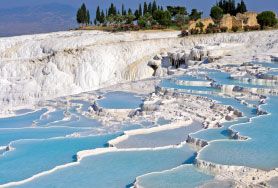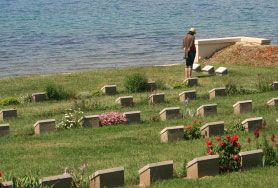
The ancient city of Troy was founded in about 3000 BC. From 3000 BC to 1700 BC, Cities Troy 1-Troy V had a similar culture. From 1700 BC Troy changed with increasing sophistication in house building and pottery, and increasing trade with Greece.
It is believed under King Priam in Troy V1 that the Trojan Wars took place. An earthquake in 1250 BC damaged the walls and hastened the Archaean victories. Troy V11 lasted from 1250BC to 1000BC. After an invasion around in 1200 BC by the Balkan people, Troy declined for 4 centuries until it was rebuilt as a Greek City (Troy V111 700-85 BC).










